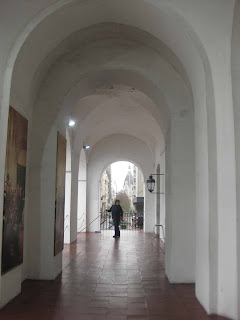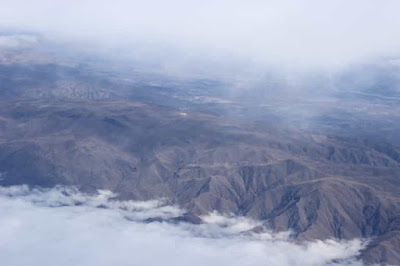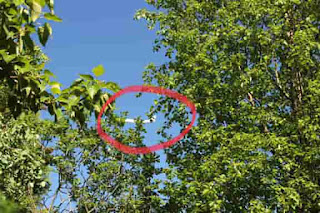[This is my first posting on my new iPad. There are things here in blogger that don’t work quite right. The page is too big for the screen and Command - doesn’t make it smaller. If I use my fingers, I get all the open windows. Weird things are happening. I’m hoping it isn’t just really clumsy with blogspot, just different ways to do things that I have to figure out. But I’m having trouble placing the pictures and text where I want things. So bear with me as I figure this out. And anyone who’s figure this out, please give me some suggestions]
One of the factors that made leaving Anchorage during the summer for this trip, was the knowledge that the Anchorage airport would continue with construction on the North-South runway, diverting all flights to take off over Anchorage. Last summer it was three months of constant noise. This summer is scheduled from May to October.
Fortunately, it hasn’t been as bad as last summer so far. Planes took off on a flight line just south of our house, so we heard most of them. Those heading south than veered in that direction, and those heading north veered over our house, some a little further east, a few just west. The constant rumble and sometimes roar, was a serious annoyance.
I was surprised - I should know better than to be surprised - by the vehemence of some online comments at Next Door and letters to the editor that made light of the noise and attacked the complainers as whiners. After all, it’s your airport, they’d mock.
Clearly these were folks who have trouble empathizing. If it wasn’t a problem for them, anyone who complained was a weenie. But what I wanted to know was whether they just lived where there was less jet noise, or they endured the same decibels as I did but it didn’t bother them.
I also was curious about what kind of disturbance would start THEM whining. Gun control laws? Lack of alcohol? Drivers going the speed limit? Losing at anything?
But this last week it seems the planes have been moving back to last summer’s pattern. I was at a Community Council meeting at which Jim Szczesniak spoke briefly. He’s the guy who worked at a high level at O’Hare until about 10 years ago when he took over his grandmother’s T-shirt company. It seemed a strange career move that made me wonder why Alaska hired him to run the airport and whether this runway project is his ticket out of here. In any case, he’s full speed ahead, people with noise problems be damned. He did say that pilots this summer have been requested to fly slower until they reach - if I recall correctly - 4000 feet. That was supposed to make things quieter. And maybe accounted for the planes who flew farther east (than my house) before turning. But it was at the pilots’ discretion.
Some of the pictures show that some planes are much further away, but others fly pretty much right above us.
I’ve realized though, in the last few nights that planes have been waking me at all hours of the night. So if I’m going to miss a month summer in Alaska, this is a good summer to do it.
































